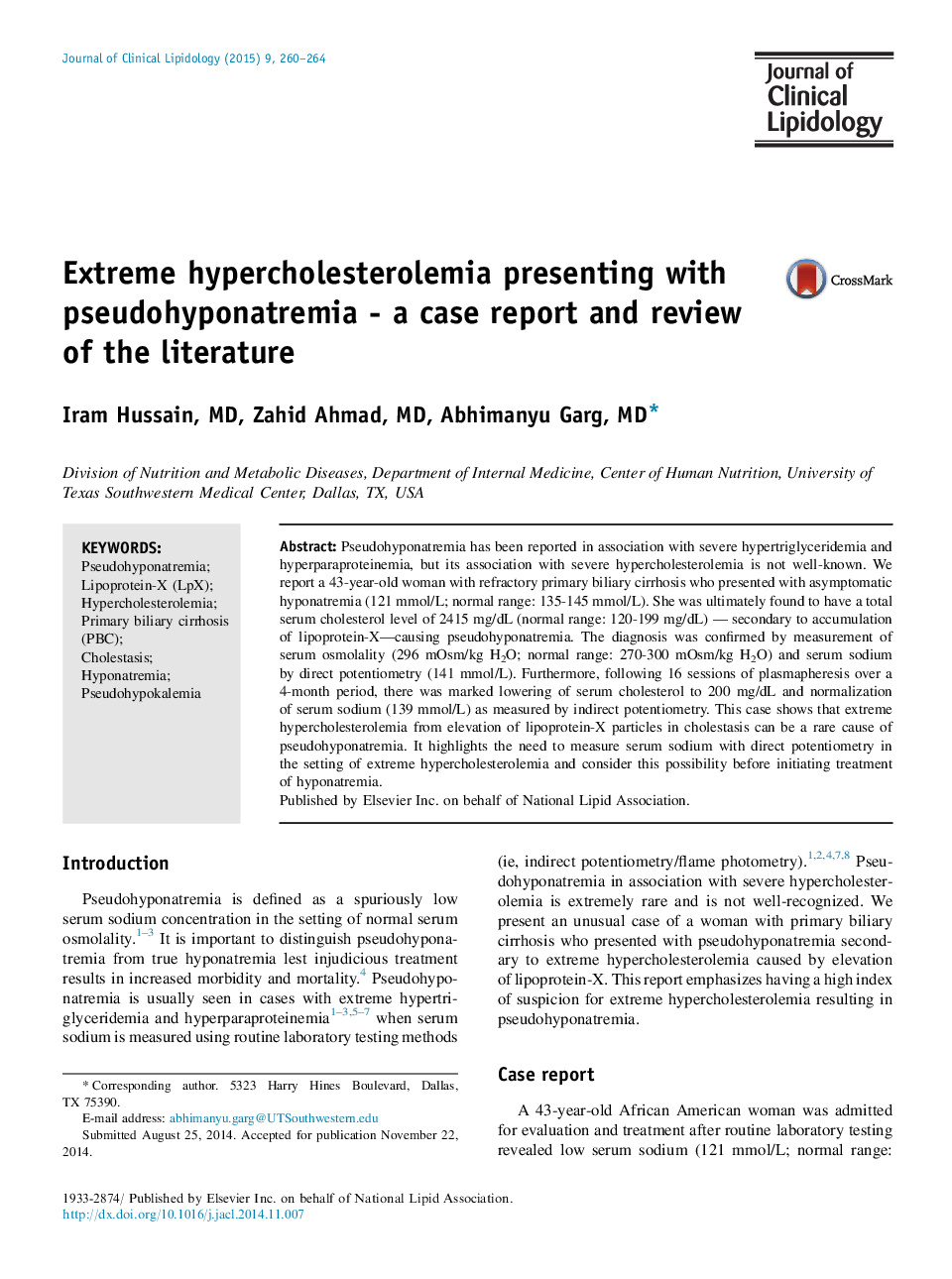| کد مقاله | کد نشریه | سال انتشار | مقاله انگلیسی | نسخه تمام متن |
|---|---|---|---|---|
| 5985883 | 1178784 | 2015 | 5 صفحه PDF | دانلود رایگان |
- Extremely high cholesterol levels may present as pseudohyponatremia.
- Cholestasis may result in accumulation of lipoprotein-X.
- Total cholesterol levels and routine sodium levels are inversely proportional.
- Presence of lipoprotein-X is shown by lipoprotein electrophoresis.
- Serum osmolality should be measured when pseudohyponatremia is suspected.
Pseudohyponatremia has been reported in association with severe hypertriglyceridemia and hyperparaproteinemia, but its association with severe hypercholesterolemia is not well-known. We report a 43-year-old woman with refractory primary biliary cirrhosis who presented with asymptomatic hyponatremia (121Â mmol/L; normal range: 135-145Â mmol/L). She was ultimately found to have a total serum cholesterol level of 2415Â mg/dL (normal range: 120-199Â mg/dL) - secondary to accumulation of lipoprotein-X-causing pseudohyponatremia. The diagnosis was confirmed by measurement of serum osmolality (296 mOsm/kg H2O; normal range: 270-300 mOsm/kg H2O) and serum sodium by direct potentiometry (141Â mmol/L). Furthermore, following 16 sessions of plasmapheresis over a 4-month period, there was marked lowering of serum cholesterol to 200Â mg/dL and normalization of serum sodium (139Â mmol/L) as measured by indirect potentiometry. This case shows that extreme hypercholesterolemia from elevation of lipoprotein-X particles in cholestasis can be a rare cause of pseudohyponatremia. It highlights the need to measure serum sodium with direct potentiometry in the setting of extreme hypercholesterolemia and consider this possibility before initiating treatment of hyponatremia.
Journal: Journal of Clinical Lipidology - Volume 9, Issue 2, MarchâApril 2015, Pages 260-264
